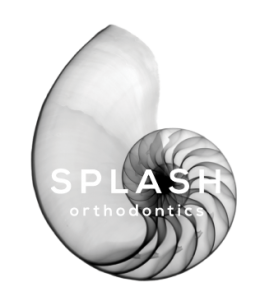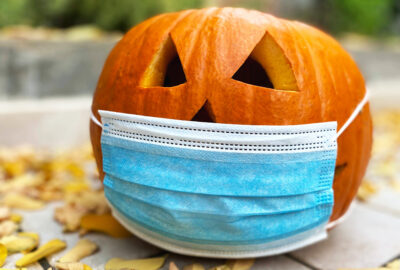Splash Orthodontics
Are Teeth Whitening Products Safe?

 Are Teeth Whitening Products Safe?
Are Teeth Whitening Products Safe?
The rise of the cosmetic beauty industry has seen a dramatic increase in the number of people opting for teeth whitening procedures. Teeth whitening kits are more readily available to people than ever before and often at a far lower cost than visiting your dentist. It’s an interesting concept, as while the majority of teeth whitening kits are backed by dental professionals, there is still a degree of controversy surrounding their use.
Today, we’re going to be looking at what lies behind the smile of whitening products, how effective they are and most importantly, if they are safe.
What are Teeth Whitening Kits?
While the majority of tooth whitening brands will differ slightly, all kits will include whitening gel, an LED whitening light and a mould tray and/or impression kit.
How do Teeth Whitening Kits Work?
Additionally, there are numerous ways to whiten your teeth, but the most important thing to remember is that there are correct and incorrect ways of doing it. Always be sure to arrange a consultation with your dentist or orthodontist if you’re thinking about having your teeth whitened, as there are many teeth whitening kits that claim to be effective but may actually be doing more harm than good.
Generally speaking, teeth whitening kits are designed to enhance the appearance of your teeth, making them appear whiter using various whitening agents. The main bleaching ingredient found in the majority of teeth whitening products is carbamide peroxide (CP) or hydrogen peroxide (HP) – both of which are successful whitening agents. Both produce exceptional results and are designed and manufactured by dental professionals, so you can rest assured that they are both safe and effective.
What Teeth Options are There?
Teeth whitening kits are not the only effective way to help brighten your smile. There are a number of other techniques you may want to try before opting for teeth whitening kits, such as toothpastes, mouthwashes, and in-office whitening treatments. Be sure to speak with your dentist about which options are right for you, especially if you’re considering treatment at home, as it requires more discipline and time to complete.
The Side Effects of Teeth Whitening
Of course, there are scenarios where teeth whitening kits are abused and this is when side effects can occur. It isn’t necessarily the ingredients found within teeth whitening kits that can cause problems, it’s incorrect use of the kits or overusing them in the hope to achieve whiter teeth. So, what can you do to help prevent any negative side effects?
Consult your dentist – if you’re apprehensive about whitening kits, or you’d simply like more information on what it involves and whether you’re a suitable candidate.
Follow the instructions – this is especially important when applying the teeth whitening gel, do not leave it on for longer than necessary. This will not make your teeth whiter, instead, it will weaken your tooth’s enamel and therefore make your teeth more sensitive.
Avoid staining – once you have finished the teeth whitening process, be sure to avoid foods that will stain your newly whitened teeth. Such foods will be detailed on the instructions but foods such as pasta sauce, red wine, coffee and fizzy drinks are best avoided.
The Effect it has on your Gums
Many people prefer having their teeth whitened in-office (performed by a dentist or healthcare professional) because it gives them peace of mind, knowing the process is being carried out by an expert. This in-office approach usually means that you’re able to see results faster than you would using a home kit. This is because dentists usually use bleaching lamps and sometimes a higher concentration of bleach.
What Happens if Bleach Touches your Gums?
If bleach does make contact with the gums, irritation is possible. The level of irritation also depends on the concentration of the bleach, so the more concentrated the application, the more unpleasant the irritation. However, special protection is applied during in-house bleaching procedures, so the bleach will be harmless and if any were to make contact with the gums, they would heal soon after the bleach was removed.
The Effect It Has on Your Teeth
Tooth sensitivity is something else to consider when opting for teeth whitening. Some people have far more sensitive teeth than others, so this is something to address and discuss with your dentist before you undergo the whitening process.
Similarly, decaying teeth, broken fillings and generally damaged teeth need to be addressed before you begin the whitening process, as the bleach may cause irritation. While bleaching damaged teeth may cause some discomfort, it won’t damage the enamel underneath.
When You Shouldn’t Whiten?
While teeth whitening is a fairly straightforward procedure, there are some circumstances where you might want to avoid whitening, or at least contact your dentist or healthcare professional if you have concerns.
If you have crowns and/or bonded teeth – while teeth whitening had no problem whitening your enamel, it won’t achieve success on the surfaces of bonded or crowned teeth if, however, you have bonded or crowned teeth towards the back of your mouth (molars), as they’re less noticeable than your front teeth.
Pregnancy – there is a debate on whether teeth whitening does affect pregnant women. The reason is that there isn’t enough conclusive evidence to suggest that teeth whitening is completely harmless to pregnant women. If you are considering using teeth whitening kits, it’s essential that you first speak with your doctor.
Remember, Talk to Your Dentist or Orthodontist!
While teeth whitening is an entirely elective procedure and one that you can essentially buy over the counter, it’s worth speaking to your dentist about all your teeth whitening options and whether it’s right for you. Understanding the process is extremely important and understanding the risks of excessive bleaching is equally as important.

 Hove
Hove 01273 203514
01273 203514


 Read more
Read more


